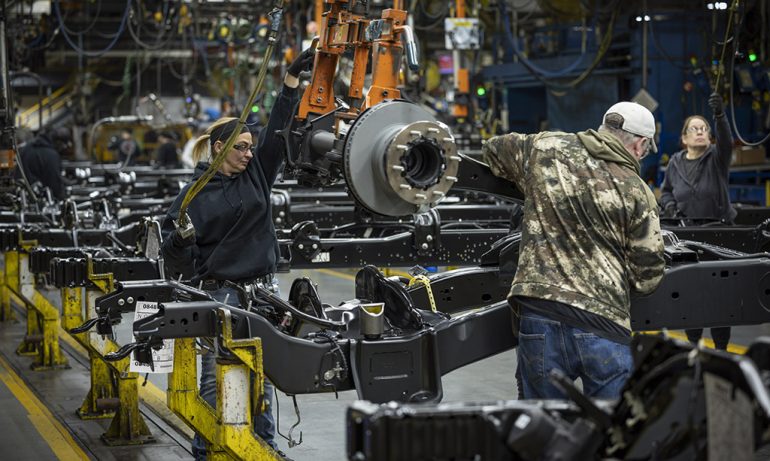
The United Auto Workers (UAW) threw a curveball at the automotive industry on Wednesday when they launched an unexpected strike at Ford’s largest and most lucrative factory, creating a ripple effect that puts pressure on Stellantis NV and General Motors as contract negotiations resume.
UAW negotiators are now turning their attention to talks with Stellantis, the parent company of Chrysler, after initiating a strike at Ford. The move by UAW President Shawn Fain to halt production at Ford’s Kentucky Truck plant, which produces Super Duty pickups and Lincoln Navigator SUVs, serves as a warning to Stellantis and General Motors, whose wage and benefits proposals have fallen short of what Ford has offered, based on summaries released by the automakers and the UAW.
Also, don’t forget that you can get discounted new car pricing with a free quote through qualified local dealer partners.
This surprise strike has raised speculation that it could mark the beginning of the endgame in a nearly month-long series of coordinated walkouts at the Detroit Three automakers. For Stellantis, the spotlight is on high-profit targets, including their Ram pickup truck factories and Jeep SUV plants. Analysts are closely monitoring the situation, with Sam Fiorani, vice president of global vehicle forecasting at AutoForecast Solutions, emphasizing, “This puts everybody on notice. If they haven’t brought anything new to the table since last week, GM and Stellantis should be worried.”
The strike at the Kentucky Truck plant has financial implications, with Ford estimated to lose about $150 million per week in core profit. Wells Fargo analysts believe that this escalation could indicate that the UAW is nearing a contract proposal with Ford within the next 1-2 weeks.
Throughout this ongoing labor dispute, automakers have offered improved wage hike proposals, agreed to wage adjustments for inflation, and offered better pay for temporary workers. However, the UAW’s demands extend to higher wages, the elimination of a two-tier wage system, and the expansion of unions into battery plants.
While the UAW’s strikes have impacted thousands of workers, it’s essential to note that less than a quarter of the 150,000 UAW workers at the Detroit Three automakers are currently on strike. Nevertheless, the ripple effects have caused thousands more to be furloughed from non-striking operations as automakers contend that walkouts have made their work unnecessary. Ford, for instance, warned that workers at a dozen other factories might be sent home due to the truck plant strike.
The Kentucky Truck plant, Ford’s most profitable operation, generates approximately $25 billion in annual sales, accounting for about a sixth of Ford’s global automotive revenue. The strike there has created significant challenges for Ford and amplified the UAW’s demands.
The UAW’s strategy of targeted action rather than a full-scale strike at all operations reflects a desire to keep the automakers off balance. UAW President Shawn Fain has made it clear that time is of the essence, emphasizing, “We’re not gonna wait around forever.” He believes that the 8,700 workers shutting down Ford’s biggest plant will send a powerful message.
As the Detroit automakers prepare to report their third-quarter financial results, the UAW sees an opportunity to leverage their anticipated robust profits to negotiate for a more favorable contract.
Before the Ford announcement on Wednesday, the UAW had initiated walkouts at five assembly plants, including two Ford assembly plants, at the three companies and 38 parts depots operated by GM and Stellantis. The ongoing labor dispute continues to captivate the industry’s attention, leaving both automakers and union representatives with much to consider in the coming weeks.